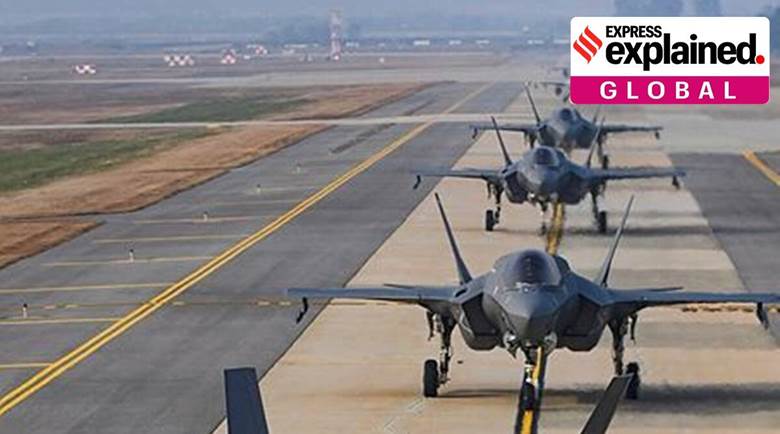CRISIS IN KOREAN PENINSULA

Copyright infringement not intended
Context: Tensions escalated in the Korean peninsula after North Korea fired at least 20 missiles east and west of its southern neighbour, with one landing near South Korean territorial waters for the first time since the two countries were divided in 1953.
Details:
- One of Pyongyang’s missiles fell 57 km off the South Korean city of Sokcho, while another landed less than 30 km south of the North Limit Line (NLL), a disputed maritime border between the two Koreas, in what South Korean President Yoon Suk-yeol called an “effective act of territorial encroachment
Why did North Korea launch the missiles?
- The escalation comes after North Korea warned against the recent joint military drills between the United States and South Korea, which it views as provocative and a rehearsal for an invasion.
- The US and South Korea began their largest-ever joint drills, called Operation Vigilant Storm, during a period of national mourning in South Korea.
- North Korea Foreign Ministry warned that the two would pay “the most horrible price in history,” likely hinting at a nuclear threat.
- North Korea has conducted an unprecedented number of weapons tests this year and the country’s Supreme Leader Kim Jong Un last month guided exercises that involved ballistic missiles armed with mock nuclear warheads, claiming it was meant to act as war deterrence.
Heightened tensions
- The recent tit-for-tat missile strikes come at a time of heightened tensions between the two Koreas.
- Both fired warning shots and artillery shells at each other last month and blamed each other for breaching their maritime border.
- South Korea has also been conducting a number of joint military drills with the US over the past few months, which has been strongly opposed by North Korea.
- President Yoon, who assumed office in May this year, has a markedly different approach to North Korea, and has vowed to “normalise” these joint exercises.
- North Korea has responded to these tests by conducting a series of missile tests and military exercises.
Background:
- On 25th June 1950, North Korea, backed by the USSR, launched an attack on South Korea and occupied most of the country.
- In response, the United Nations force led by the US retaliated.
- In 1951 the US forces led by Douglas MacArthur crossed the 38th parallel and triggered the entry of China in support of North Korea.
- To prevent further escalation peace talks began later in 1951.
- On 27th July 1953, the Korean Armistice Agreement was signed between the United Nations Command, the Korean People's Army and the Chinese People's Volunteer Army.
- It led to an official ceasefire without a Peace treaty. Thus, the war officially never ended.
- The root of the conflict lies in the Japanese occupation of Korea between 1910- 1945.
- When Japan was defeated in the Second World War, the Allied forces agreed to establish a “four-power trusteeship over Korea” at the Yalta Conference (1945).
- However, the USSR invaded Korea and took control of the north while the south remained under the rest of the allies, mainly the USA. The division of the two regions was along the 38th parallel north, which still continues to be the official border dividing the two Koreas.
- In 1948 the Republic of Korea (South Korea) and the Democratic People’s Republic of Korea (North Korea) was established.
https://indianexpress.com/article/explained/korea-vs-korea-what-the-missile-attacks-mean-8245701/




1.png)
